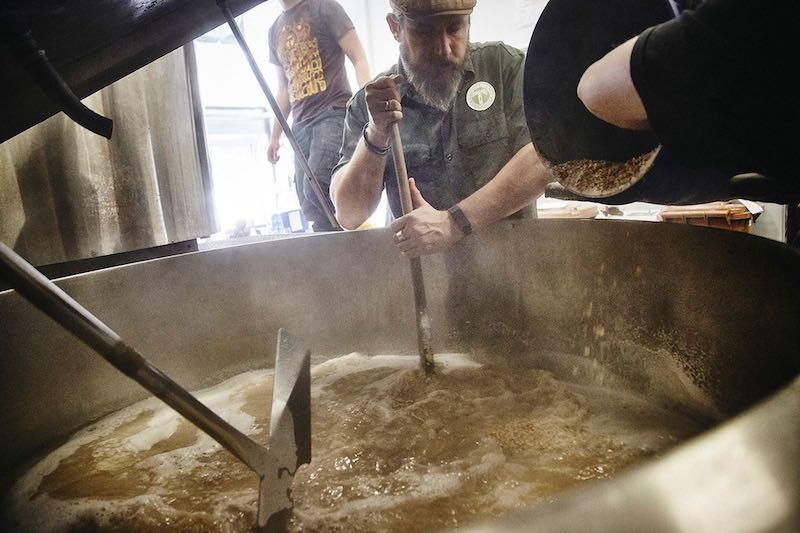
Everything about Alcohol Free Beer

What is alcohol free beer?
Alcohol free beer is defined as having an alcohol content between 0.0% and 0.05%. It has no measurable influence, even on alcohol-sensitive people. Anything above this must be labelled as low in alcohol. These trace amounts are nothing to worry about. Even fruit juices or overripe bananas can compete in the alcohol content game.
What are some of the best alcohol free beers?
Traditionally, alcohol free beers were limited to pilsners & hoppy lagers. These days, however, you can find all styles of beer in alcohol free versions, including Weissbiers, pale ales and IPAs. If you're looking for the best low alcohol and alcohol free beer, you can’t go wrong with brands like BrewDog, Lowlander, Heineken, Affligem, vandeStreek, Brixton and Gosser.
Discover no and low alcohol beer here.
Is 0% alcohol really alcohol free?
While beverages labelled as "0% alcohol" or "alcohol-free" typically contain trace amounts of alcohol (usually below 0.5% alcohol by volume), they are considered non-alcoholic in most jurisdictions. The small amount of alcohol is usually a result of the production process or natural fermentation (which we’ll learn more about below). Although, it's generally not enough to cause intoxication or have significant physiological effects.
If you’re avoiding alcohol due to health, cultural, or other reasons, it's essential to be aware of the specific alcohol content in alcohol free beer. However, in everyday terms, these drinks are often referred to as alcohol-free beer or low alcohol beer, and they are suitable for those looking to enjoy the flavour of beer without the effects of alcohol.
How many calories in non alcoholic beer?
Although one of the benefits of alcohol free beer or low alcohol beer is that it contains fewer calories than its alcoholic counterpart, unfortunately, it is not calorie free. The calorie content of alcohol free beer will vary depending on the amount of carbohydrates and protein it contains. This depends on its base ingredients and how it's produced.
Find out more about calories in beer as well as answers to some of the most common questions about beer.
Is alcohol free beer bad for you?
Due to the fact alcohol free beer or low alcohol beer has less alcohol, it puts less stress on the liver. The lower alcohol content, fewer calories and isotonic nature makes alcohol free beer a healthier option that can be enjoyed by health-conscious people, athletes, motorists, and even pregnant women.
The isotonic nature of alcohol free beers makes them a particular hit with athletes, offering quick absorption of essential ingredients like carbohydrates, polyphenols, or vitamins. And here's a bonus – no hangovers mean more motivation to stay active the next day.
Can I drink alcohol free beer when pregnant?
Alcohol free beer is generally considered safe during pregnancy, although it's crucial to consult with your GP before making any decisions about your diet during pregnancy. Some alcohol free beers may contain trace amounts of alcohol, typically less than 0.5% alcohol by volume, due to the production process or natural fermentation. For this reason, some women prefer to avoid even minimal alcohol content during pregnancy to ensure the utmost caution.
How is alcohol free beer made?
Ingredients, methods and process
The production of alcohol free beer involves the same brewing process as regular beer, but with specific methods to reduce or eliminate the alcohol content. There are several primary approaches to producing alcohol free beer after fermentation:
Vacuum Distillation
This method involves lowering the pressure in a controlled environment, allowing alcohol to evaporate at a lower temperature than the other components of the beer.
Reverse Osmosis
The beer is passed through a filter that separates alcohol from the water and flavour compounds based on molecular size.
Heat Evaporation
Applying heat to the beer to evaporate the alcohol, then condensing the vapor back into liquid form.
Filtration
Using special filters that can separate alcohol from the beer based on size.

Additionally, since some flavours may be lost during the alcohol removal process, the brewer may need to adjust the flavour to ensure that the alcohol free beer retains a taste like regular beer. This may involve adding back some of the flavours removed during alcohol extraction.
The world of alcohol free beer and low alcohol beer is vibrant, diverse, and continuously evolving. As more people look to live a healthier lifestyle, the demand for high-quality alcohol free beer gets higher and higher. So, expect to see a broader range of styles from breweries embracing the challenge of crafting the best alcohol free beer and low alcohol beer that taste just like the real deal. We can’t wait to see what the beery future holds.